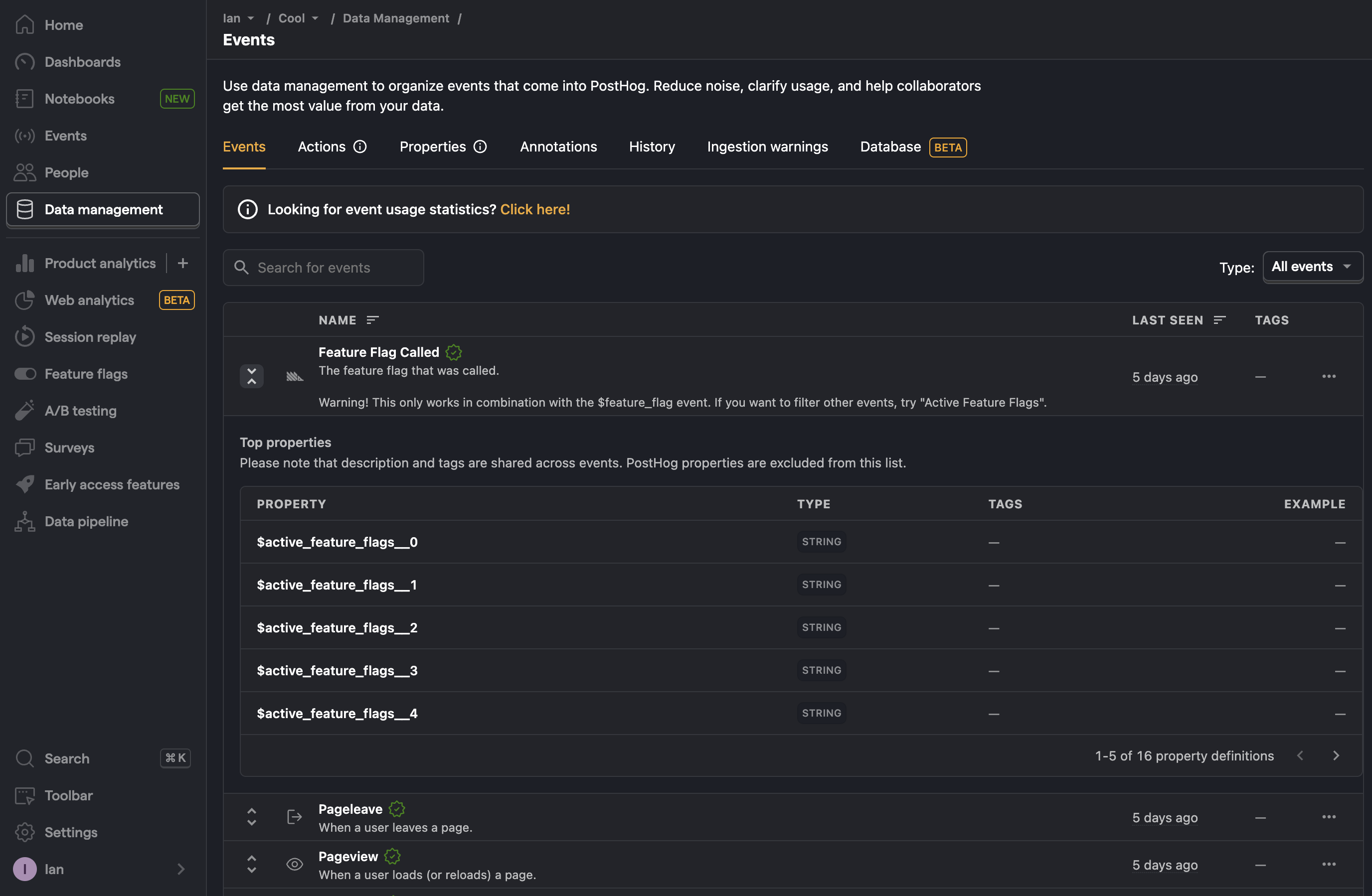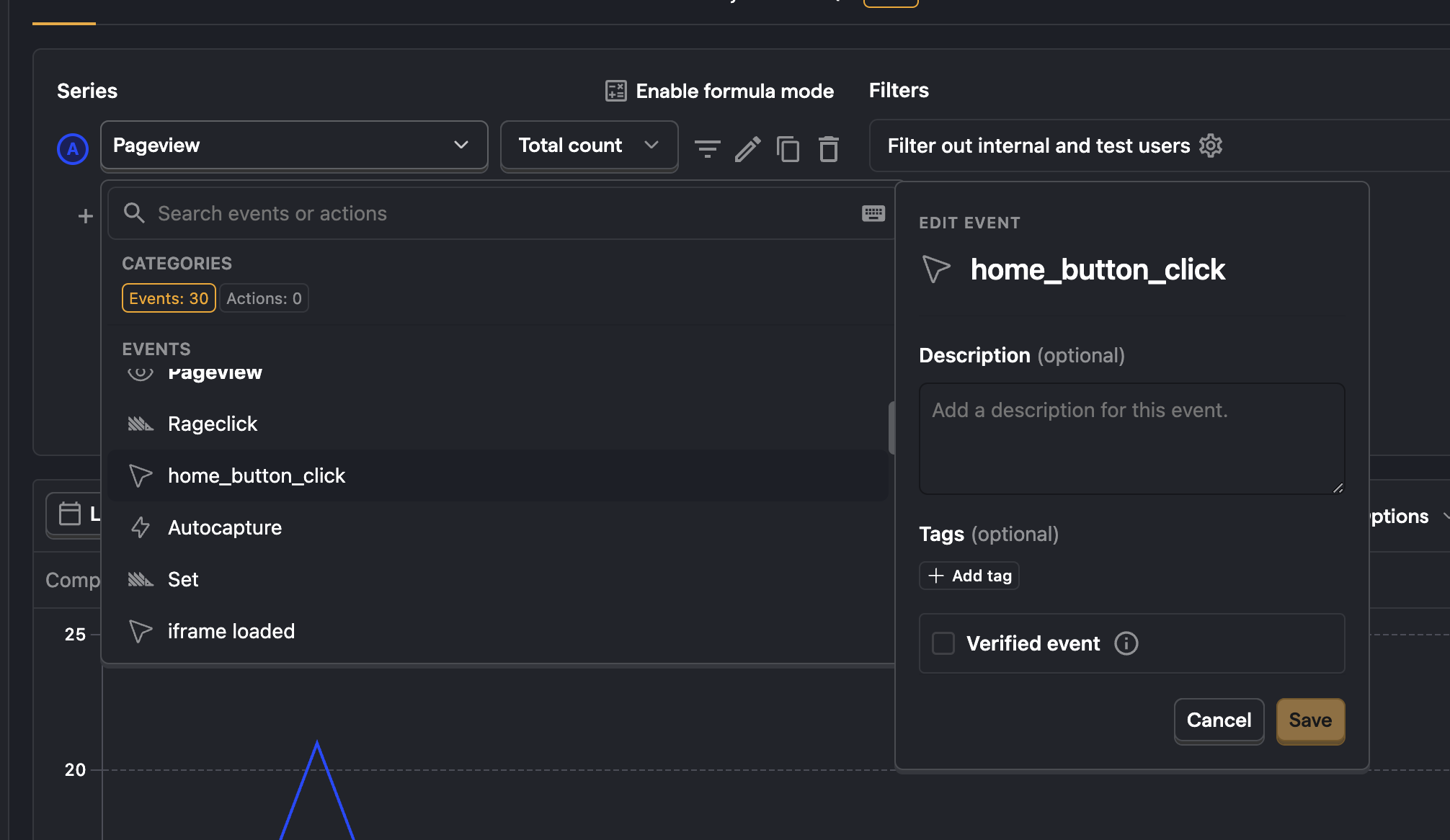You can manage all your PostHog data on the Data and People pages.

Events
The Events tab contains a list of all the events captured into your PostHog instance. They are sortable by name, last seen, and type (custom vs default).
Each event also contains the top custom properties for that event including their type, tags, and an example.
Event details
Clicking on an event from this list shows more details about it, such as:
- An editable description
- The raw event name
- First and last seen dates
- Top custom properties
- Matching events
Clicking the edit button enables you to edit the description along with the event's tags and verification status. You can see and edit the description, tags, and verification status wherever you use this in PostHog, such as insights.
This is useful for keeping track of what data is up-to-date and relevant.

Actions
The actions tab contains a list of all the actions created. They are sortable by name, who created them, creation date, and whether they post to a webhook.
The actions list also contains the type of action such as an event, autocapture, or pageview URL along with a description and tags. Clicking on an action takes you to that action's details page where you can edit it.
Properties
The properties tab contains a list of event, person, and group properties that have been captured into your PostHog instance. They are sortable by name and each listing also contains their type and tags.
Annotations
The annotations tab enables you to create and edit annotations. These enable you to add written notes to specific dates and times that show insights and dashboards.
You can also sort by date and time, scope (project), creator, and creation date.
History
The history tab contains a log of all the changes to event and property descriptions and tags along with deletion and verification of events.
Ingestion warnings
Sometimes PostHog runs into problems during ingestion due to incorrect or suboptimal usage of PostHog. For example, if you capture an event with a generic ID like null, PostHog doesn't ingest it.
If this happens, we do our best to still ingest the event and we log an ingestion warning.

See ingestion warnings docs for a complete list.
Database (beta)
The database tab shows a list of the tables in your PostHog instance. You can then query the supported tables using HogQL.